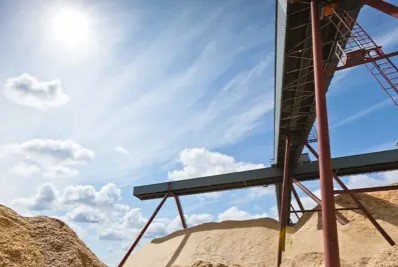 Our Customers’ Big Questions: “Can you help reduce my carbon footprint?”
Our Customers’ Big Questions: “Can you help reduce my carbon footprint?”
This question is something that virtually all of our customers are now asking. Urgent climate goals, tightening regulations, demanding shareholders, and consumer pressure push many of our customers to reduce their carbon footprint. In turn, they ask what value UPM Pulp brings to the table. Do we contribute to our customers’ targets or are we getting in the way of those goals?
Senior Sustainability Manager for UPM Pulp’s Finland Operations Kari Saari and Senior Manager, Pulp Operations Development at UPM Uruguay, Lorena Echevarria, tell us how UPM’s pulp mill operations are constantly developed in Finland and Uruguay to help achieve both our own and our customers' goals and targets. Big actions and investments are often required, but it is also smaller, more detailed things that can bring real benefits.
“How pulp is produced matters. Our facilities are already extremely energy-efficient and produce plenty of carbon neutral energy. To further improve our operations, we need a solid scientific method to evaluate every single production step,” Saari says.
“By assessing the environmental impacts in the whole production chain, from raw materials to pulp production, we identify hot spots and possibilities to reduce our carbon footprint. This tool is called a lifecycle assessment approach,” Echevarria adds.
Calculating environmental impacts with a life cycle assessment approach
A ‘Life Cycle Assessment’ (LCA) looks at different stages of a product’s ‘life’ to provide realistic data about environmental impacts.
“We assess our pulp from cradle to gate. This means evaluating every step, starting from tree nursery, forestry, harvesting, and transport to the mill, to chemicals production and transport, energy consumption and production, and all stages within the pulp mill,” Echevarria says.
In this context, the ‘gate’ is UPM Pulp’s mill or warehouse gate. Emissions generated from the transportation of pulp to our customers are calculated separately. This is because each location is different, and therefore we provide those emissions figures separately to each individual customer.
“Another way to assess the life cycle is from cradle to grave. This analyses the end product as well, the using and discarding of it (the ‘grave’ bit). But when pulp leaves our mill gates, our customers use it in many ways for which we are not able to evaluate environmental impacts,” Saari adds.
So, the ‘cradle to grave’ assessment is more likely to happen ‘downstream’, where a customer, or customer’s customer, can take into account our cradle to gate assessment, the transportation elements, and then the processes that create products from the pulp, and so on.
Lorena adds that real data is necessary in order to identify hot spots where implementing changes can improve the carbon footprint of UPM Pulp’s facilities.
“We use as much primary data from our operations as possible. We are also working with our chemical suppliers to receive primary data from them.”
Analysing and constantly improving operations around the world
The life cycle assessment tool has been in use at UPM in Finland since 2020 and in Uruguay since 2021. UPM Pulp has publish their first ever LCA-based carbon footprint reports in 2024. The tool will continue to be in constant use, development, and research.
“For example, in Finland we have three mills that produce softwood pulp, and two of them also hardwood pulp. With the life cycle analysis, we can compare each step and improve operations at all mills, and produce footprints for each product, not just for mill averages,” Saari says.
Recent operations development in Uruguay has contributed to carbon footprint reductions of our eucalyptus pulp.
“We are switching to a more efficient way of transporting raw materials from forests to mills. We have been able to reduce the distances from the forest to the mills due to logistics optimisation after the start-up of the second mill in Uruguay. Furthermore, we have increased the use of trucks with higher capacity. Both measures have contributed to reducing emissions from wood transportation,” Echevarria says.
“We have also developed a new use for pulp production solid waste. The dried sludge from our mill is now used as a non-fossil fuel source in a local Uruguayan cement company, replacing the fossil fuel coke in their cement kiln,” she adds.
We are committed to our sustainability targets. We are working towards UPM’s 65% carbon reduction target for our own emissions by 2030, as well as a 30% reduction in our supply chain emissions. We also aim to eliminate fossil fuels from our production by 2035.
As part of this process, we also see how important it is for our efforts to help our customers to meet their own targets and goals. We will continue to work with our suppliers and customers to help make this happen, as we transition to a future beyond fossils.
The new LCA-based carbon footprints can be found in our UPM Pulp Certificate Finder for the UPM Kaukas, UPM Pietarsaari, UPM Kymi, and UPM Fray Bentos pulp mills. Our new UPM Paso de los Toros pulp mill in Uruguay will retain the existing CEPI-based ‘10 Toes’ footprint for 2024 but will follow the new LCA approach in 2025.
